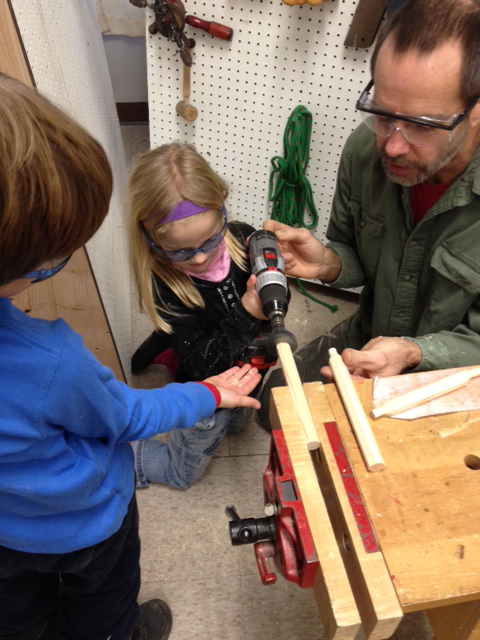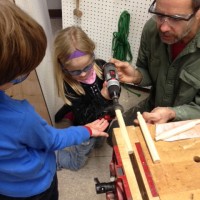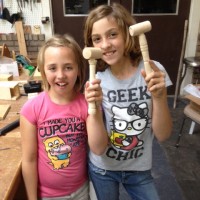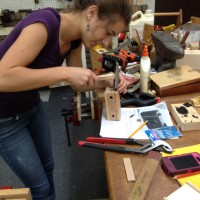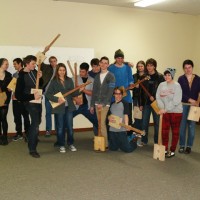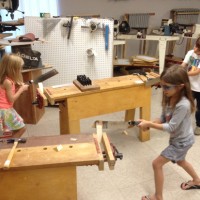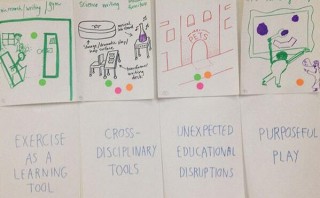As first graders at Clear Spring School are studying ornithology, they’re also using handsaws to carve model birds. Upper schoolers have made cigar box guitars and pinhole cameras—one student, interested in baking, made his own dough board. This year, a dozen new Sloyd knives, each sharp enough to give a case of shivers to most school administrators, were added to their toolbox.
Not a problem, says Doug Stowe, who leads the “Wisdom of the Hands” program he founded in 2001. “Working with real tools—which they do with great care—to do real things is just part of everyday life here. The program helps clarify the way we teach; it’s based on the understanding that hands-on learning provides a crucial pathway to the development of character and intellect.” Projects reinforce what students are learning in other classes, adding depth, breadth, and interest while improving skill and confidence levels.
Twelfth grader Siddhi carved a bird feather from a piece of wood he’d been admiring for four years. “When everyone does a project—together or separately—it brings out your artistic side,” he says. “And you get amazing results, like a boat made by a whole class or individual guitars.” His younger brother Oakley, a fifth grader, started making wooden swords, knives, and axes at age six; he’s now making custom longboards.
“Children naturally want to excel at something they can measure and compare,” says Mr. Stowe. “Their confidence emerges not because someone else has said they’re capable, but because they’ve discovered it for themselves.”
